World 🢖 South America 🢖 Falkland Islands
Churches 🢔 Religious architecture 🢔 Architectural wonders 🢔 Categories of wonders
Wonder
Christ Church Cathedral in Stanley
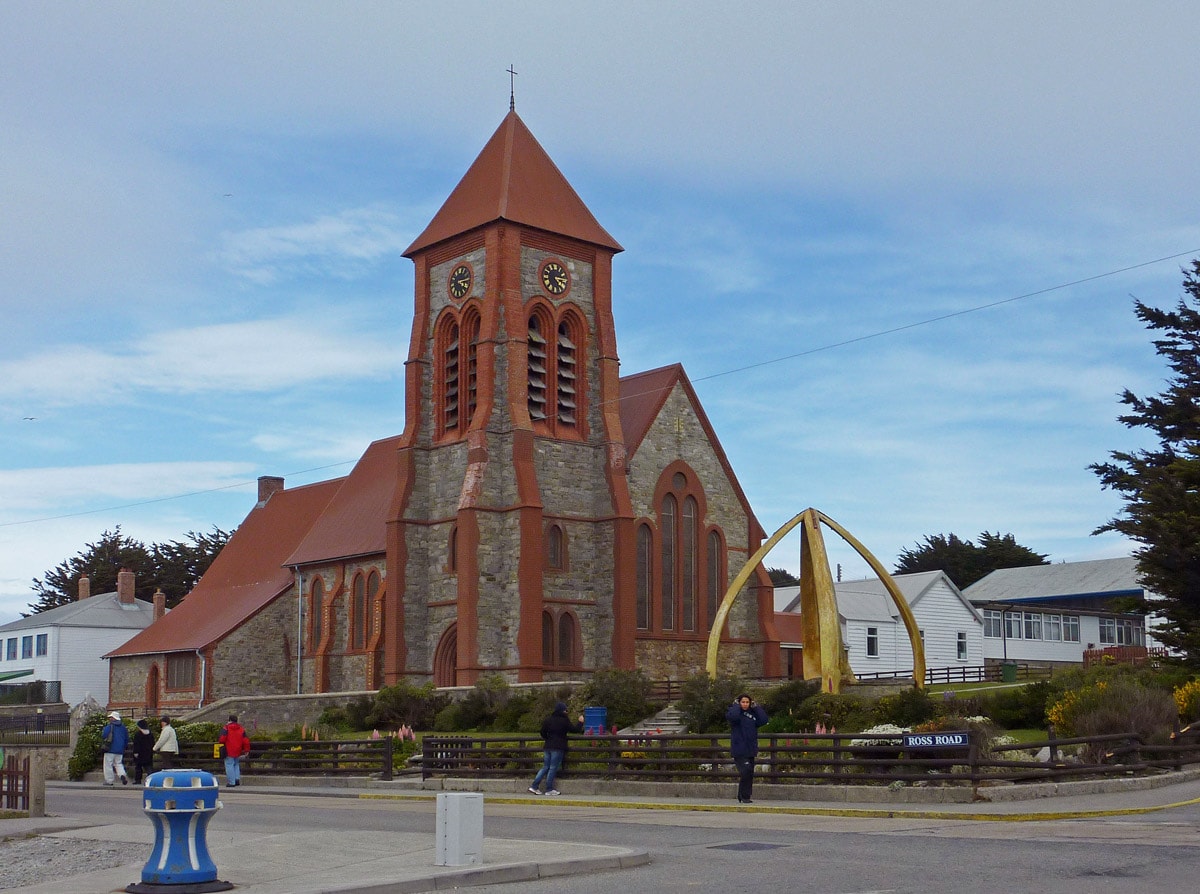
 In short
In short
The southernmost Anglican cathedral is Christ Church Cathedral in Stanley, Falkland Islands. This brick and stone building was designed by Sir Arthur Blomfield and constructed in 1892.
 35.8%
35.8%
GPS coordinates
Location, address
Year of construction
Architect
Architectural style
Branch of Christianity
Map of the site
If you see this after your page is loaded completely, leafletJS files are missing.
 In detail
In detail
Peat Slip
Stanley became the capital of Falkland islands in the middle of the 19th century. One of the first buildings here was the Exchange Building built on the site of the present-day cathedral. In 1865 the eastern wing of this wooden building was turned into a church – Holy Trinity Church – which was never consecrated.
Before the construction of the Panama Canal Stanley had significant geopolitical importance – ships stopped here for repairs after the dangerous route around Cape Horn.
Bishop of Falkland Islands felt that the church is too small and in 1882 there was established a church building committee.
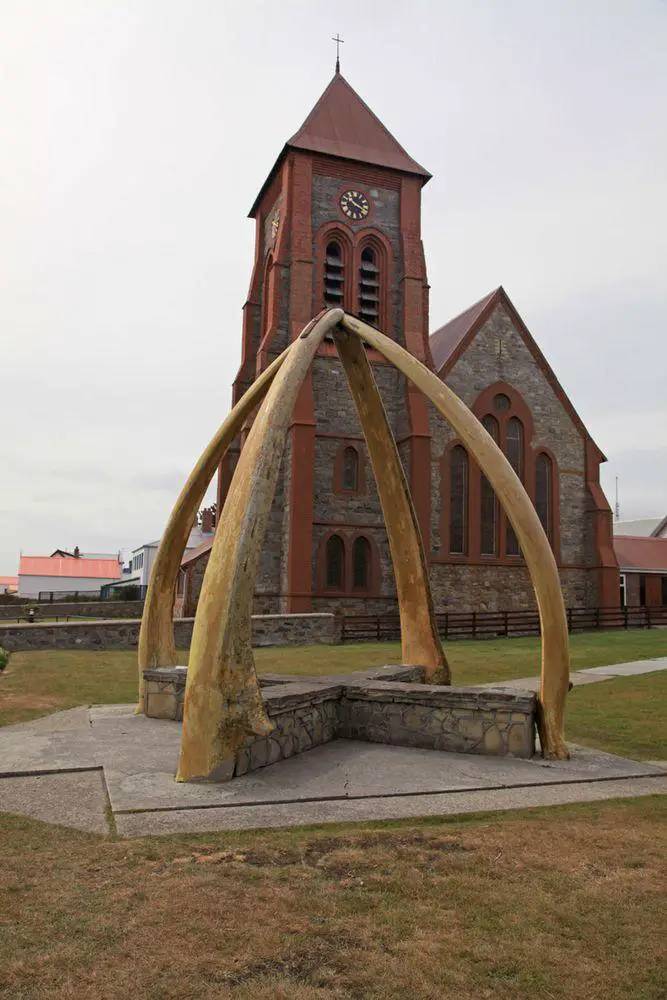
Nature speeded up these plans.
The winter of 1886 happened to be very wet, with frequent heavy rains. One day a catastrophe happened – a peat layer slid down from the slope of the hill next to Stanley. This landslide destroyed many buildings along its way – including the Holy Trinity Church.
New church
The cooperation of the people on Falkland Islands and assistance from the United Kingdom brought a success. The new church was designed by the famous architect Sir Arthur Blomfield and built from local stone and bricks in 1890 – 1892.
The new church was consecrated on February 21, 1892, by the Bishop Waite Hockin Stirling.
This church has a simple interior. The eye is attracted just by the intricate stained glass in the windows (made in 1927, 1958, 1988) and numerous plates along the walls telling about many persons and events.
Interesting is the collection of some 55 hassocks – cushions used while the congregation kneels on while the prayer. These hassocks are knitted by local people and each of them depicts a design or picture that has a connection with Falkland Islands.
The church has been renovated 100 years after its construction – in 1992.
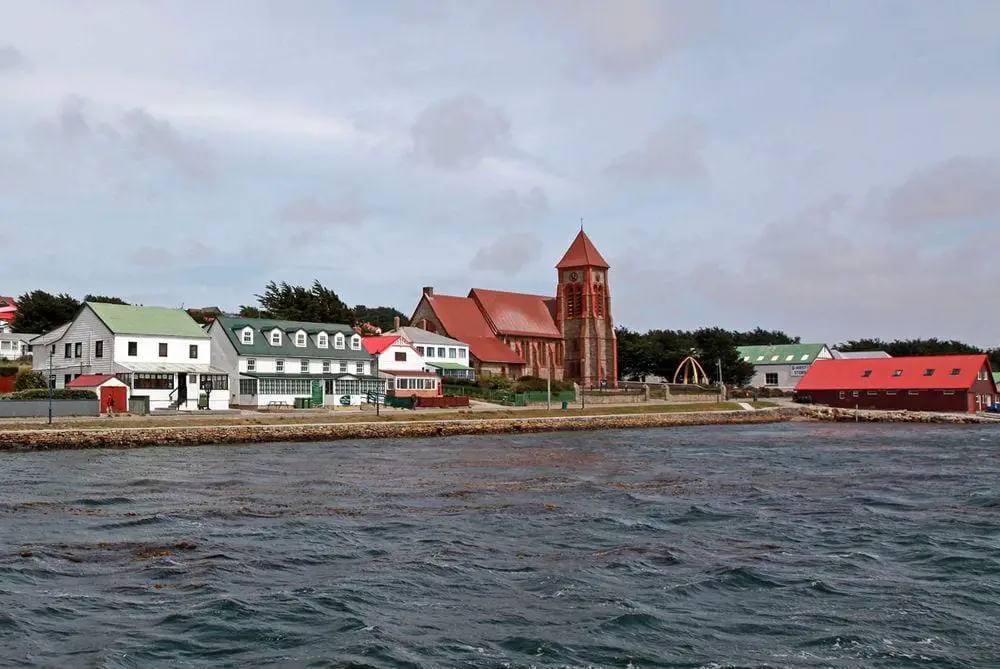
The Shackleton Banner
One of the valuables in the church is a banner of the Order of Garter, bequeathed by Sir Edward Shackleton (1911 – 1994) – a son of the famous explorer of Antarctica Ernest Shackleton.
Order of the Garter is the most prestigious order of chivalry in the United Kingdom, it is existing since 1348. Most banners of this order are located in St George’s Chapel at Windsor Palace in England and the banner of Shackleton is the only one in South America.
Edward Shackleton was an active explorer himself and was a president of the Royal Geographic Society in 1971 – 1974. He was knighted in 1974.
In 1975 and also in 1982 Sir Shackleton was invited by the British government to explore the economics of the Falkland Islands. His proposals included the upgrade of Stanley airfield, licensing of fishing, land reform. His advice has been of great assistance to the economy of Falklands.
Southernmost Anglican cathedral
Christ Church in Stanley is the parish church of the Falkland Islands, South Georgia, and the British Antarctic Territories. It is the southernmost Anglican cathedral in the world and one of the smallest Anglican cathedrals.
Bishop of this church now is Archbishop of Canterbury – the principal leader of the Church of England, with his seat 12 655 km far away in London.
Whalebone Arch
The Falklands Conflict between Argentina and the United Kingdom started long ago. British captain John Byron claimed the islands in 1765 (one year after the French) but Spain bought the French colony and expelled the Brits in 1770. Spanish settlers withdrew to Argentina in 1811.
In 1820 the islands were claimed by the new nation of Argentina, but in 1833 the islands were regained by British forces.
In 1933, to commemorate 100 years anniversary of this event, there was built an original monument in front of Christ Church Cathedral – a Whalebone Arch.
It consists of two jawbones of blue whales (Balaenoptera musculus) – the largest mammals in the world. These bones were brought here from the South Shetland islands in 1922.
Now this unusual monument is deteriorating and has been coated.
References
- Port Stanley – Falkland Islands. James Cusick’s Blog. Accessed on 01.01.2012.
- Christ Church Cathedral. Falklandia.
 Linked articles
Linked articles
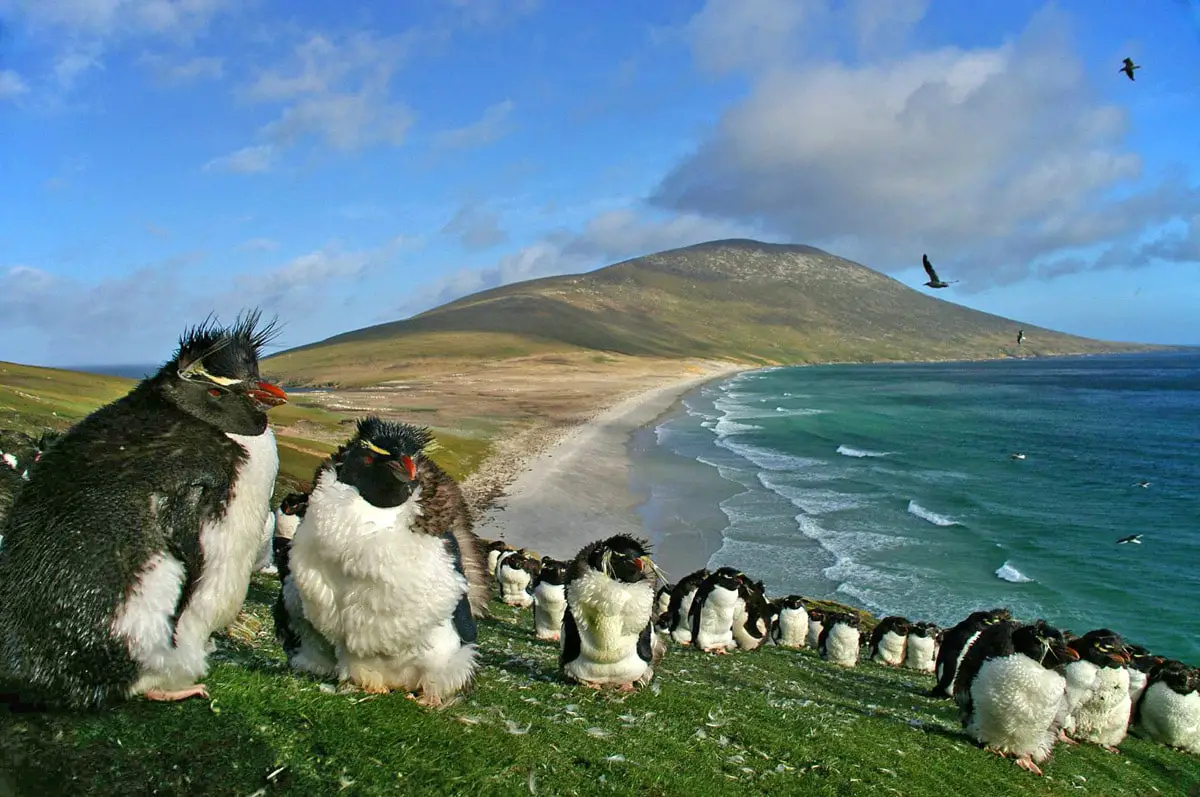
Wonders of Falkland Islands
The landscape of the Falkland Islands is barren, with rocks and characteristic stone runs – stone-covered plains. In spite of this uninviting description, islands have their special charm. This is the land of wilderness and there is abundant life along its rugged coast and beaches.
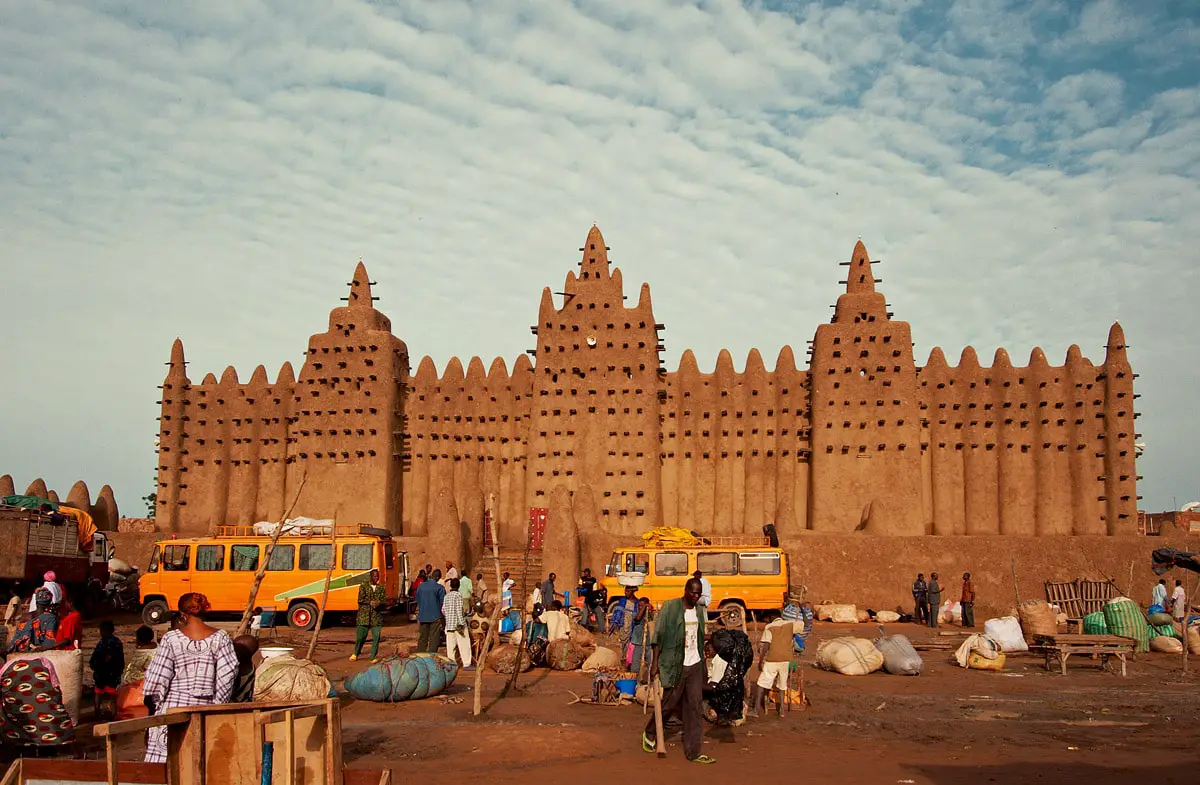
Religious architecture
Since ancient times human talents and skills have been expressed in religious architecture and arts, and traditions and rituals have evolved around pilgrimage sites. Religious buildings represent a major part of the highest achievements in architecture and crafts.
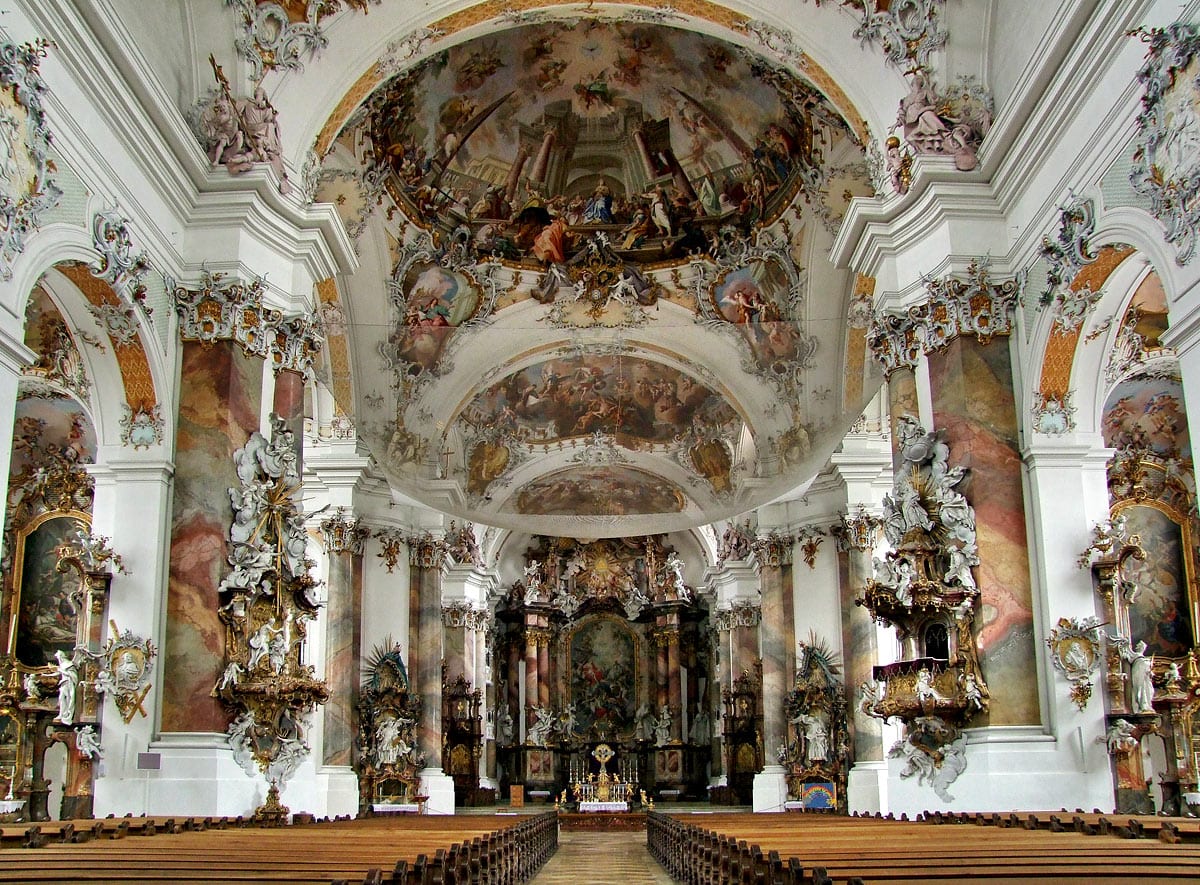
Churches
Throughout the millennia Christian churches have been the epitome of architecture and arts achievements in Western culture.
 Recommended books
Recommended books
My Falkland Islands Life
The world calls The Falkland Islands harsh and isolated. The Carters called it home… In 1982, war brought The Falkland Islands into the spotlight. When Jennifer and her family put down roots in an unspoiled community on West Falkland, they can’t help but see the unruly climate and the close proximity to a frozen wasteland.
Falkland Islands: The Bradt Travel Guide
This guide gives special prominence to the natural history of these islands which are teeming with wildlife, with a focus on conservation and environmental issues.


